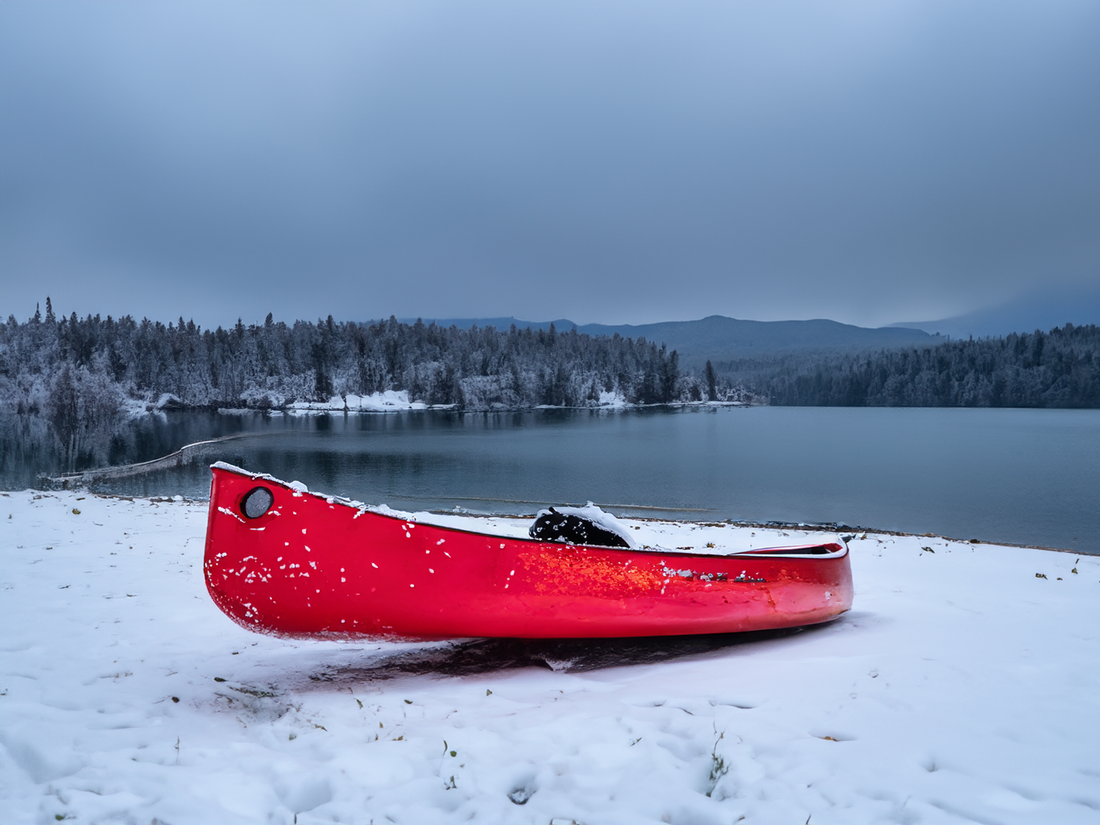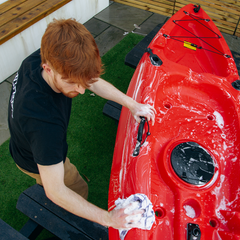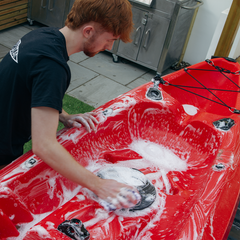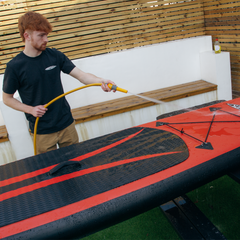
Winter Storage and Maintenance Guide for Kayaks & Paddleboards
Share
Introduction
Winter storage for our treasured water sports equipment can be a right challenge, especially when you're tight on space. Whether you're a seasoned hand or just getting your feet wet, these comprehensive and cost-effective tips for your kayak and paddleboard storage will make sure they stay in top nick.
Storing Your Equipment
- Kayak:
- On the grass or ground: Although kayaks are robust, placing them directly on the ground can expose them to damp and pests. So, best flip your kayak to ensure water runs off and avoid any debris collection. Keep those hatch covers open to fend off mould and mildew.
- Off the ground: Lifting your kayak is a smart shout. Use trestles and make sure they've got some padding to avoid any undue pressure on the kayak's hull. Fancy a bit of DIY? Make sure your home-made trestles are sturdy and can handle the kayak's weight without a wobble.
- Using racks or brackets: Vertical storage is a proper space-saver. When popping them on brackets, make sure they're padded and spaced out right to spread the kayak's weight evenly.
- In the garage: Ceiling storage is a cracking idea but often overlooked. The diagonal method with adjustable slings is efficient. Check those slings now and again for wear to keep things safe.
- Paddleboard:
Your paddleboard's carry bag isn't just for show. It shields against dust and the odd scrape.
- Temperature & Humidity: Stash in spots without drastic temperature changes. Too much heat can cause delamination, while the cold might make the board a bit brittle.
- Position: If you're not using a bag, stand your paddleboard on its side or hang it up vertically to avoid any bending or dings.
Cleaning Tips
- Kayak:
- Combat Corrosion: Saltwater is proper corrosive to metal bits, leading to them wearing out before their time. A good freshwater rinse after each outing will do wonders.
- Dirt & Debris: Cleaning isn't just for show; it's also about spotting any potential bother. Ignored scrapes can grow, costing you more in the long run.
- Cleaning Solutions: A bit of mild detergent does the trick for regular cleaning. If you want to splash out a bit, specialist UV Protection coats not only keep the colours bright but fend off the elements.
- Paddleboard:
- Tackle Corrosion: Saltwater isn't just a problem for kayaks. Make sure you give those adhesive areas, especially around the foam deck, a good scrub.
- Debris & Dirt: The surface of a paddleboard, though hardy, can get a bit battered over time. Regular check-ups during cleaning can save a packet on repairs.
- Cleaning Solutions: Besides your usual washing-up liquid, consider dedicated board cleaners that offer a bit more protection without messing with the board's grip.
Leak Tests
- Kayak:
Checking for leaks is just good sense. By spotting the small stuff early on, you avoid bigger headaches down the line. After filling it up, don't just look for drips but also for damp spots on the kayak.
- Paddleboard:
The bubble test, helped along by washing-up liquid, is spot-on for catching even the tiniest punctures. Doing this regularly, especially after a particularly adventurous outing, ensures your board doesn't leave you in the lurch.
Conclusion
A bit of regular care and proper storage of your kayak and paddleboard is money well spent, ensuring smooth sailing (or paddling) when the season rolls around. With this guide to hand, you're sorted to face the winter months head-on.




